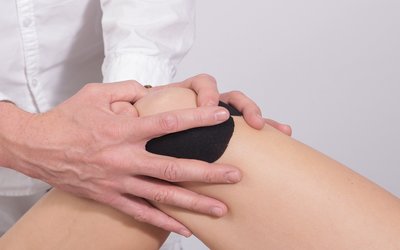What is Joint Pain?
[the_ad id=”6082″]
Joint pain is characterized by inflammation, pain, swelling and stiffness in the joints. While joint pain can affect people of any age, including children, it is more commonly found in people who are overweight, or are over 45 years of age, or lead a sedentary or an unhealthy lifestyle. Joint pain occurring due to obesity or lifestyle can be reduced and managed by losing weight and shifting to a healthier way of living.
Joint pain can also occur due to arthritis. It is a rheumatic disease that plagues most people over 50 years of age. Arthritis can be difficult to live with, as the pain is unbearable, practically immobilizing the person. It refers to disorders like osteoarthritis, gout, ankylosis spondylitis, systemic lupus, and rheumatoid arthritis. The problem is further compounded if the person is overweight, as excess body weight puts more stress on the weight-bearing joints.
There are numerous types of arthritis, but osteoarthritis and rheumatoid arthritis are the most common ones.
1. Osteoarthritis
Also known as wear and tear arthritis, it is the most common type of arthritis. Osteoarthritis occurs when the cartilage protecting the ends of the bones wears down over time. It can damage any joint in the body, but mostly affects joints in hand, neck, knees, lower back and hip. Some symptoms of osteoarthritis are early morning stiffness, swelling, tenderness in one or more joints, fever and weakness. Millions of people around the world are affected by osteoarthritis.
2. Rheumatoid Arthritis
It is a chronic autoimmune disorder that affects the small joints in hands and feet. It affects the lining of joints, causing swelling and pain, resulting in bone erosion and deformity of bones.
Joint Pain Causes
Joint pain can occur due to a variety of causes. Some of the most common causes are –
1. Sedentary lifestyle
It weakens the bones, ligaments and cartilages.
2. Obesity
Excess weight causes a strain on the knee and ankle joints, resulting in wear and tear of the joints and weakening the cartilages.
3. Incorrect posture
This adds additional stress on the bones and muscles, leading to osteoarthritis.
4. Injuries and accidents
Injuries, fractures, sprains, joint twists and accidents can also add stress on the joints.
5. Accessories
Yes, you read this right. Certain accessories can harm your bone health. For example, high heels add strain on the knees and ankle joints. Similarly, heavy handbags and backpacks can add strain on the shoulder joints and wallets can cause discomfort in the spine and legs. Regular use of these accessories can cause damage to the bones, muscles, and cartilages, leading to joint pain.
6. Poor diet
Eating unhealthy food or skipping meals weakens the immune system. A weak immune system is susceptible to various illness including inflammation and weak muscles and bones.
7. Hereditary
While there is no clear connection between arthritis and genetics, the probability of arthritis occurring in a person increases if they have family history of the disease.
Click here to read more about the causes of joint pain
Symptoms of Joint Pain
Usually, the following symptoms are found to accompany chronic joint pain –
- Stiffness
- Redness
- Swelling
- Locking of joints
- Weakness
- Tenderness
- Popping, creaking, and snapping sounds when moving
- Limping
- Warmth in the joints
Difficulty in moving the affected limbs
Treatment
Joint pain makes you immobile. It impacts your ability to carry out day-to-day activities. But, you don’t have to live with joint pain. It can be managed and reduced with changes in your diet and lifestyle and by making exercise a part of your daily routine.
Reducing stress and taking precautions while undertaking strenuous physical activities can also reduce the risk of injuring and damaging joints.
Source:

